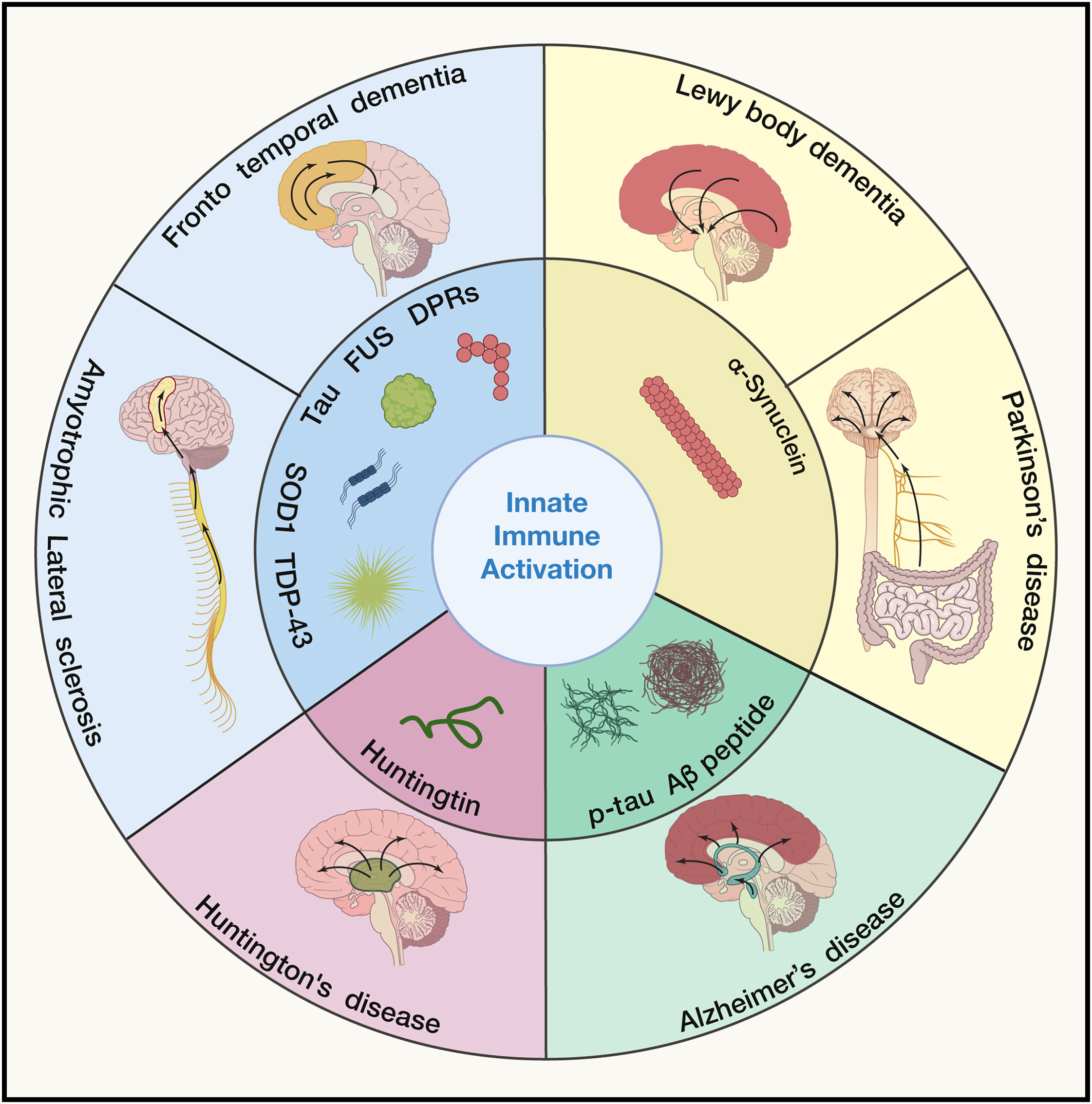This perspective provides a pioneering synthesis of clinical intervention trials examining the effects of fasting and caloric restriction on individuals suffering from neurodegenerative diseases, marking a comprehensive analysis on this topic.
This review explores the role of platelet dysfunction in the pathogenesis of Alzheimer's disease (AD) and cerebral amyloid angiopathy (CAA), discussing in vitro, in vivo, and clinical evidence related to platelet activation, adhesion, and aggregation, and highlighting potential therapeutic targets to address amyloid-related AD pathogenesis.
This article shows that rTMS over frontal regions and tDCS over temporal regions can improve memory abilities in people with Alzheimer's Disease. However, the prolonged effect of rTMS showed a statistical tendency towards enhancing memory, whereas the long-term effects of tDCS could not be assessed due to insufficient data.
The activation of the innate immune system and subsequent neuroinflammation are common hallmarks of all neurodegenerative diseases. Castro-Gomez and Heneka review the emerging evidence related to receptors implicated in the activation of innate immunity during neurodegenerative processes. They predominantly focus on the role of microglia, PRRs, and other DAMP-sensing receptors in the pathogenesis of Alzheimer’s disease, tauopathy, Parkinson’s disease, and amyotrophic lateral sclerosis.
The study emphasizes practical application with a user-friendly website, empowering radiologists to predict class probabilities, track disease progression, and visualize patient images in both 2D and 3D formats, contributing significantly to the advancement of early AD detection.
This study aimed to assess the associations of both serum vitamin D status and supplementation with all-cause dementia, Alzheimer’s disease (AD), and vascular dementia (VD) incidence. It highlighted consistent associations between various facets of vitamin D and multivitamin intake, objectively measured vitamin D deficiency and insufficiency from blood samples, and 14-year dementia incidence in a study population aged 55 to 69 years at baseline. Subgroup analyses revealed effect modification by skin color with associations only observed in the non-brown/non-black skin color group and stronger effect estimates for vitamin D supplementation in younger compared to older study participants. Although results are encouraging and suggest a potential role for vitamin D supplementation in dementia prevention, particularly for those with vitamin D deficiency, caution is advised due to the observational nature of this study. RCTs with long follow-up periods are indispensable to establishing the efficacy of dementia prevention strategies.
This study demonstrates that electroacupuncture (EA) improves learning and memory in the 5xFAD mouse model of Alzheimer's disease, likely by enhancing functional connectivity between the hippocampus and neocortex and reducing amyloid-β protein expression and deposition. These findings suggest that EA may positively impact resting-state brain activity and connectivity, contributing to cognitive and motor function improvements in AD.
Despite diagnostic challenges in differentiating lvPPA and nfvPPA, particularly in advanced cases, this study reveals divergent clinical courses and highlights the importance of assessing emotion processing capacity in dementia diagnosis and monitoring. Utilizing spatiotemporal LME modelling, the research provides valuable insights into the dynamic changes in brain atrophy and behavior, underscoring the need for ongoing evaluation of clinical requirements for patients and families over the disease course.
This review discusses the multifaceted physiological functions of cholecystokinin (CCK), its potential neuroprotective effects in Alzheimer’s and Parkinson’s diseases, and its therapeutic implications, including its impact on memory, neurotransmitters, and neuroprotection mechanisms.
This article discusses the potential therapeutic strategy of enhancing mitophagy through rapamycin treatment to alleviate cognitive impairment in Alzheimer's disease by improving mitochondrial dysfunction and neuronal loss, suggesting a novel mechanism for the neuroprotective effects of rapamycin in AD.


